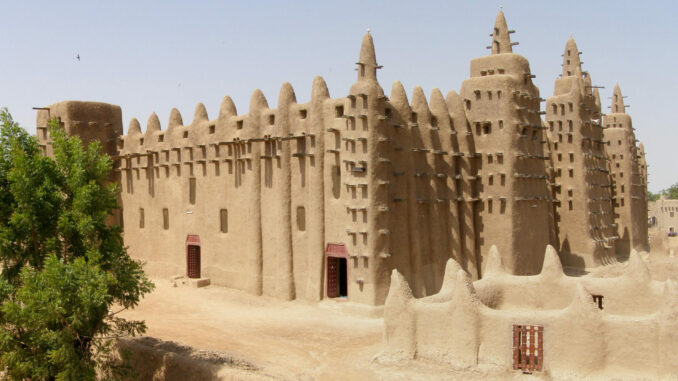
This weekend, thousands of Malians participated in the annual re-plastering of the Great Mosque of Djenne, the largest mud-brick building globally, by carrying buckets and jugs of mud. This ritual is vital for maintaining the structural integrity of the mosque, which has been listed on UNESCO’s World Heritage in Danger since 2016. The mosque and its surrounding town, historically significant for Islamic learning, have faced threats due to conflicts involving Islamist rebels, government forces, and other factions.
Before the rainy season begins in June, the Great Mosque of Djenne requires a fresh layer of mud each year to prevent deterioration. In the past, this event attracted tens of thousands of tourists annually, but like the rest of Mali, Djenne’s tourism industry has nearly vanished. Participating in the re-plastering is seen as a symbol of peace, with residents from all walks of life coming together for the activity. Amadou Ampate Cisse, a resident of Djenne, emphasized the tradition’s importance, stating it will be passed down through generations.
Typically, women and girls collect water from the nearby river to mix with clay, while men and boys climb the mosque to apply the new layer. Moussa Moriba Diakité, head of Djenne’s cultural mission, highlighted the challenges posed by insecurity, which has jeopardized the annual event. Despite the decline in , Diakité stressed the necessity of preserving the mosque, considering it an essential part of the country’s cultural heritage.
Mali, along with its neighboring countries Burkina Faso and Niger, is grappling with an insurgency involving armed groups, some affiliated with al-Qaida and the Islamic State. Following military coups in these nations, the ruling juntas expelled French forces and sought security assistance from Russia’s mercenary units.
